In this lesson, we will take a look at how to subtract mixed numbers with different denominators. It’s easy, we have some examples and exercises.
Content:
- Example 1
- Steps for subtracting mixed numbers with unlike denominators
- Example 2
- Example 3
- Videos
- References
Before getting into this topic, don’t forget that a proper fraction is a fraction where the numerator is less than the denominator. In addition, a mixed number is the sum of a whole number and a proper fraction. Look at this image:

1) Subtract 81/2 – 51/3:
To find the difference of these mixed numbers, we start by subtracting the whole numbers (8 – 5).
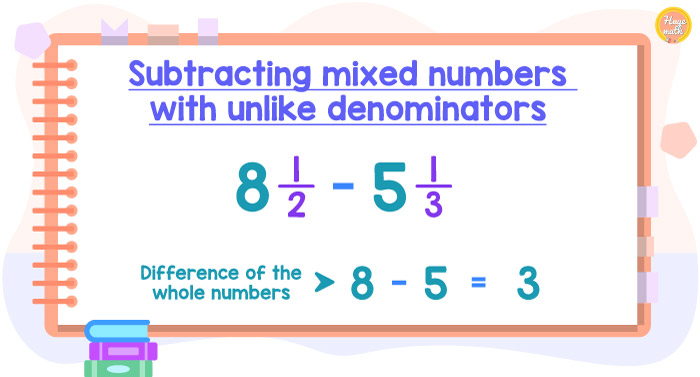
Then, we subtract the fractions (1/2 – 1/3). Since the denominators are different, we rewrite the fractions as equivalent fractions with the least common denominator, 6.
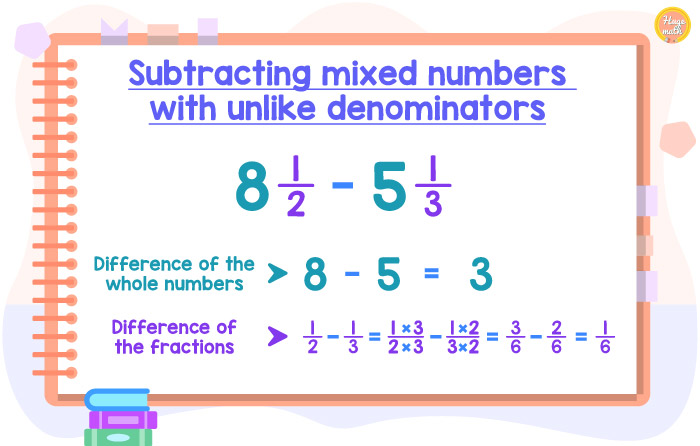
Lastly, we add the difference of the fractions to the difference of the whole numbers.

That’s it, the answer is 31/6.
Steps for subtracting mixed numbers with unlike denominators
To subtract mixed numbers with different denominators, follow these simple steps:
- Subtract the whole numbers.
- Subtract the fractions.
- Add the difference of the fractions to the difference of the whole numbers.
Let’s continue with more examples.
2) Subtract 97/8 – 21/4:
First, we subtract the whole numbers (9 – 2).
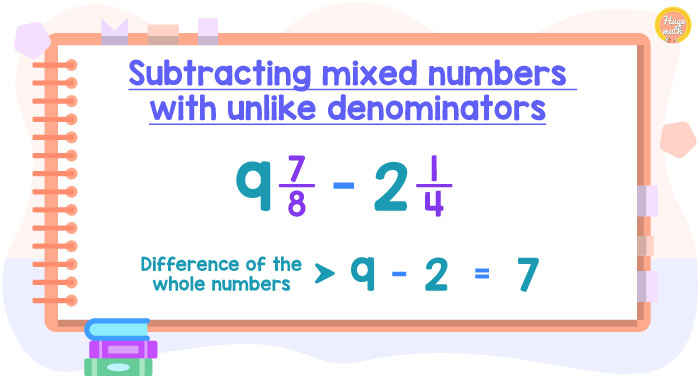
Then, we find the difference of the fractions (7/8 – 1/4). Given that these 2 fractions have different denominators, we need to rewrite each fraction as an equivalent fraction with the least common denominator, 8. It is not necessary to readjust the first fraction (7/8) since it already has a denominator of 8. However, we need to work with the second fraction (1/4).
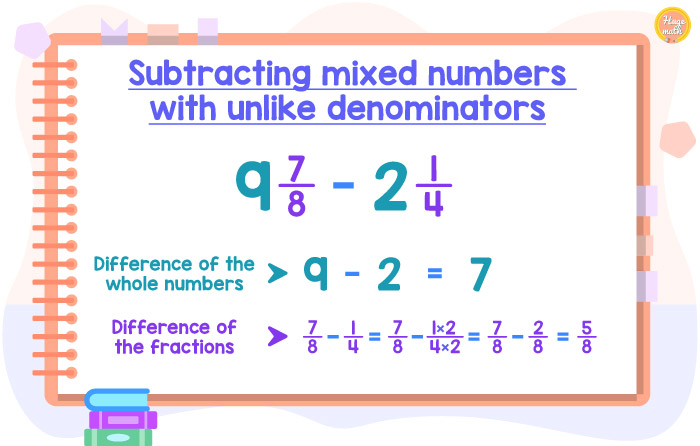
Finally, we add the difference of the fractions (5/8) to the difference of the whole numbers (7).
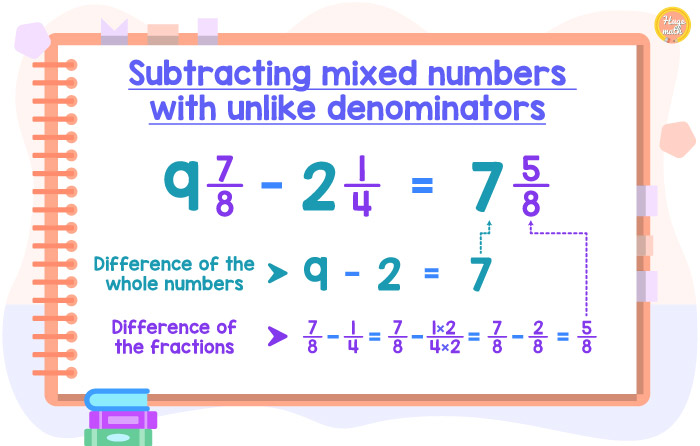
The resulting mixed number is 75/8.
3) Subtract 51/2 – 23/4:
Usually, we start by subtracting the whole numbers and then, we continue by subtracting the fractions. To subtract the fractions, we rewrite them as equivalent fractions with a common denominator. However, after rewriting the fractions, we see that we can not subtract them. The problem is this case is that the second fraction (3/4) is larger than the first one (1/2 or 2/4).

In cases like this, we will follow a different procedure. First, we rewrite both mixed numbers as improper fractions.

Then, we subtract these improper fractions (11/2 and 11/4). We are going to rewrite both fractions as equivalent fractions with the least common denominator, 4. The second fraction already has a denominator of 4, there is no need to make any changes.

Finally, we convert this improper fraction (11/4) to a mixed number. We write the answer in the form it was given; the initial statement contains mixed numbers so we will also write the final answer as a mixed number.

The final answer is 23/4.
Videos
In this video, we will see 2 easy examples.
And here we have 3 more difficult examples.
One more example with regrouping or borrowing.
Finally, another example where we are going to convert the mixed numbers to improper fractions.
References
For this lesson, we have used books:
- Tussy, K., Gustafson, D. y Koenig, D. (2013). Prealgebra (4th ed.; pp. 378-380). Cengage Learning.
- OpenStax (2020). Prealgebra 2e (pp. 374-376). Rice University.